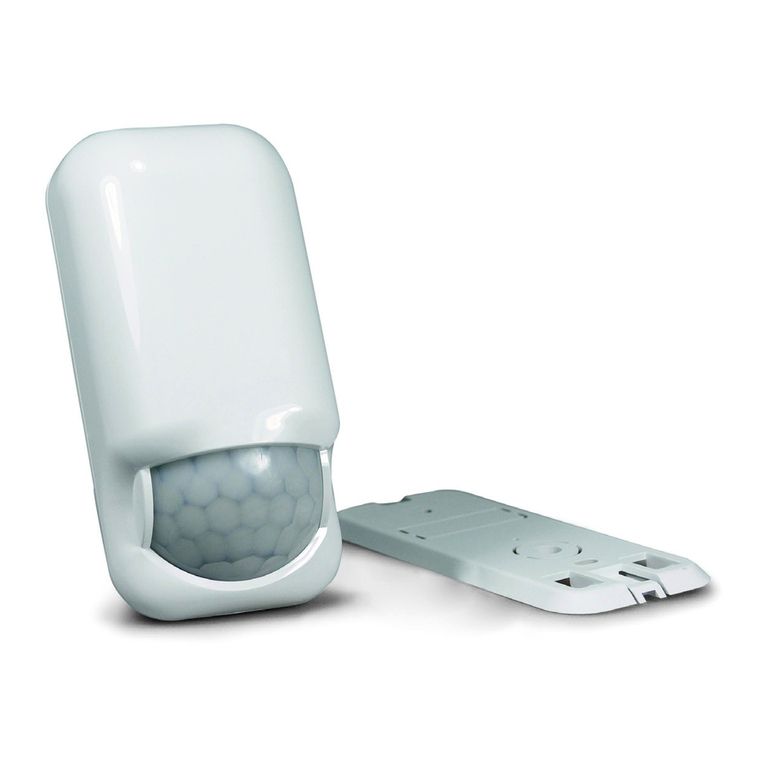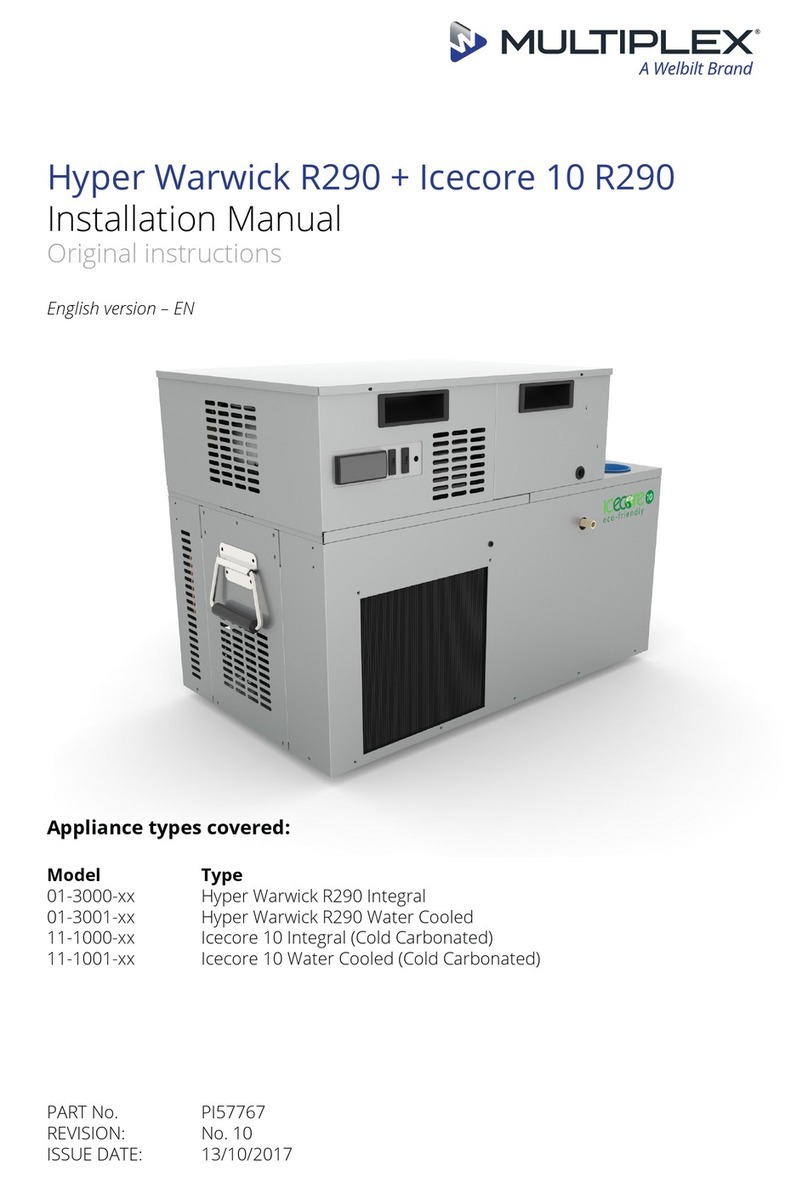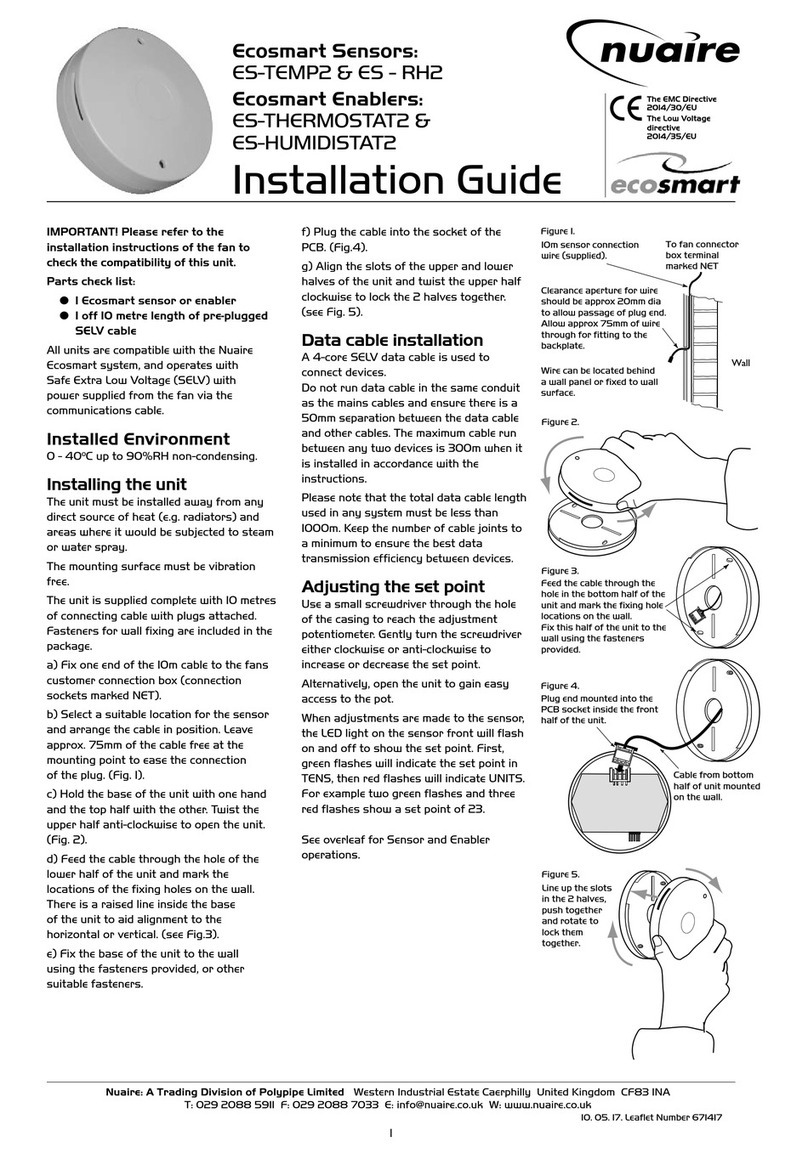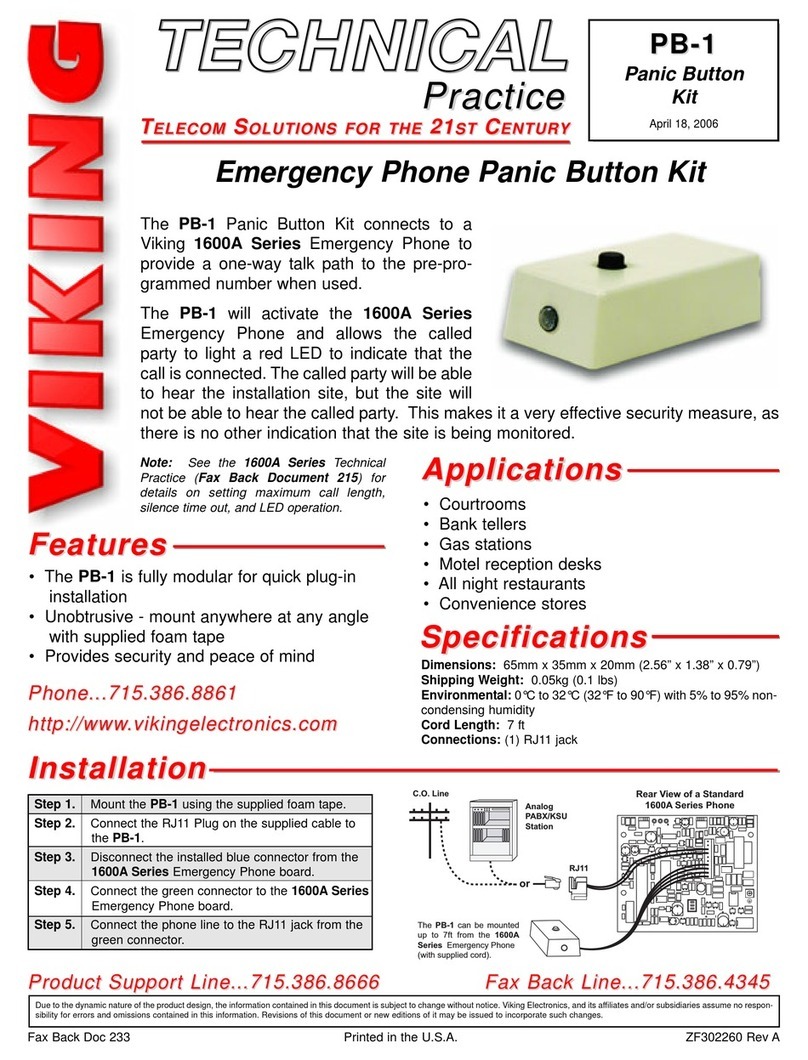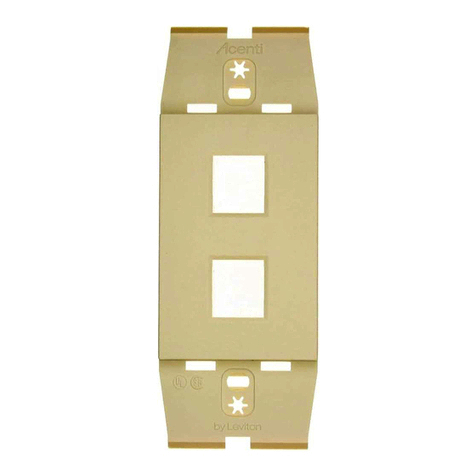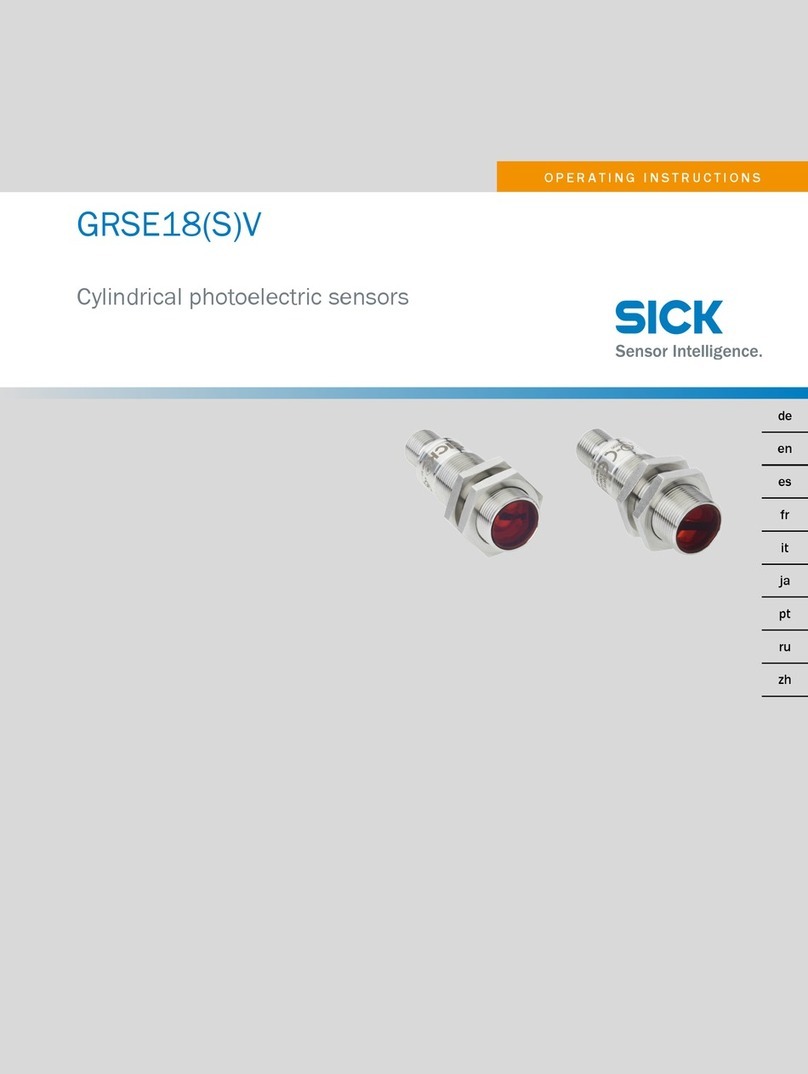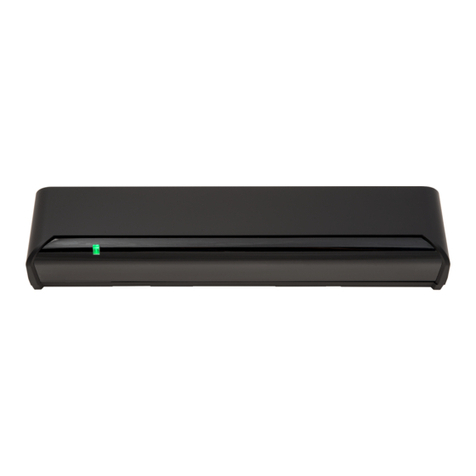SILENTRON 5515S SENSOR SOFT User manual

Dichiarazione di conformità CE:
Silentron s.p.a. dichiara soo la propria responsabilità che i prodo descri nel
presente manuale sono conformi ai requisi stabili dalle Direve e relave Nor-
me e/o speciche tecniche che seguono:
1) Direva CE 1999/5/CE - R&TTE - del 9-03- 1999 (D.L. 9/05/2001 n. 269) :le Norme e/o
speciche tecniche applicate sono :
- LVD e protezione della salute (art. 3(1)(a)): EN 60950-1 (2006-04) + A11(2009) + A1 (2010)
+ A12 (2011), EN 50371 (2002-03)
- EMC (art. 3(1)(b)): EN 301 489-1 V1.9.1 (2011-09), EN 301 489-3 V1.4.1 (2002-08).
- Spero radio (art. 3(2)): EN 300 220-1 V2.4.1 (2012-05), EN 300 220-2 V2.4.1 82012_05)
In accordo alla direva citata, allegato III;il prodoo risulta di classe 1 pertanto può essere
commercializzato e messo in servizio senza limitazioni.
2) Direva CE 2004/108 del 15 dicembre 2004, per il riavvicinamento delle legislazioni degli
Sta membri relave alla compabilità eleromagneca. Le Norme e/o speciche tecniche
applicate sono le seguen: EN 50130-4 (1995-12) + A1 (1998-04) + A2 (2003-01) - EN 55024
(1998-09) +A1 (2001-10) + A2 (2003-01) - EN 301489-1 V1.9.1 (2011-09) - EN 301489-3 V.
1.4.1 (2002-08).
3) Direva CE 2006/95 del 12 dicembre 2006, per il riavvicinamento delle legislazioni degli
Sta membri relave al materiale elerico desnato ad essere adoperato entro taluni limi
di tensione. E’ applicata la Norma EN 60950-1 (2006-04) + A11 (2009) + A1 (2010) + A12
(2011).
4) Sistemi eleronici di allarme: Norme EN 50130-5; EN 50131-1; EN 50131-5; EN 50131-2-6;
EN 50069-1; EN 60529; Grado di sicurezza: 1; Classe ambientale II.
GENERALITÀ: Sensor So è un apparecchio adao alla protezione anntrusione di porte/
nestre. Completamente senza li, funziona con una pila a boone, segnalando in centrale
quando è scarica.
Test: il funzionamento è vericabile provocando un allarme con la centrale o il ricevitore
Silentron in test.
CARATTERISTICHE TECNICHE
nota: apparecchio per impiego esclusivo in interni.
Alimentazione: pila alcalina 3V po CR 2450 o equivalente - Assorbimento 12uA a riposo,
40mA in trasmissione - Autonomia media circa 24 mesi in funzione dell’uso.
Funzioni di allarme: si ha allarme per allontanamento del magnete dal contao e “ne allar-
me” al ritorno in posizione, così da poter segnalare inssi rimas aper. Aenzione ! Dopo la
chiusura dell’insso Sensor va in blocco per 2 minu.
Supervisione: ogni 40 min. ca. si ha una trasmissione che conferma alla centrale l’esistenza
in vita dell’apparecchio.
Autoprotezione: l’apertura del vano pila provoca allarme manomissione. Porre la centrale
in TEST per cambiare la pila.
Trasmissioni radio: digitali in doppia frequenza DualBand, codicate in fabbrica e geste in
autoapprendimento da microprocessore - caraerische e potenza a norma di legge.
Portata radio: 100m in aria libera ed in assenza totale di disturbi di fondo sulla banda: essa
può subire sensibili riduzioni in interni causa la posizione degli apparecchi in relazione con la
struura dei locali e/o a causa di disturbi radio sulla banda. Occorre sempre vericare che le
portate radio siano sucien prima della installazione deniva.
INSTALLAZIONE - rispeare la sequenza delle operazioni
1) Fissare il sensore alla parte ssa dell’insso tramite il biadesivo dopo aver pulito bene la
supercie di ssaggio; montare e ssare il magnete nello stesso modo su quella mobile,
ulizzando se necessario il distanziale, come illustrato nelle gure. Il magnete può essere
ssato anche con una vite Parker D2,5 x 6.
2) Porre la centrale in apprendimento: Inserendo la pila nell’apparecchio si ha la program-
mazione.
3) L’operazione è confermata con un BEEP - più BEEP indicano che quel Sensor è già
stato programmato.
Déclaraon de conformité CE: Silentron s.p.a. déclare, sous son enère responsa-
bilité, que les produits décrits dans ce Manuel sont conformes aux condions re-
quises établies par Direcves et Normes et/ou spécicaons techniques suivantes:
1) Direcve CE 1999/5/CE - R&TTE du 9-03- 1999 : Les Normes et spécicaons
techniques appliquées sont les suivantes :
- LVD et protecon de la santé (art. 3(1)(a)): EN 60950-1 (2006-04) + A11(2009) + A1 (2010)
+ A12 (2011), EN 50371 (2002-03)
- EMC (art. 3(1)(b)): EN 301 489-1 V1.9.1 (2011-09), EN 301 489-3 V1.4.1 (2002-08).
- Spectre radio (art. 3(2)): EN 300 220-1 V2.4.1 (2012-05), EN 300 220-2 V2.4.1 82012_05)
Par conséquence le produit est de classe 1 et peut donc être commercialisé et mis en service
sans limitaons.
2) Direcve CE 2004/108 du 15 décembre 2004 : les Normes et/ou les spécicaons tech-
niques appliquées sont les suivantes : EN 50130-4 (1995-12) + A1 (1998-04) + A2 (2003-01)
- EN 55024 (1998-09) +A1 (2001-10) + A2 (2003-01) - EN 301489-1 V1.9.1 (2011-09) - EN
301489-3 V. 1.4.1 (2002-08).
3) Direcve CE 2006/95 du 12 décembre 2006 : la Norme appliquée est EN 60950-1 (2006-
04) + A11 (2009) + A1 (2010) + A12 (2011).
4) Normes pour appareils d’alarme : EN 50130-5; EN 50131-1; EN 50131-5; EN 50131-2-6; EN
50069-1; EN 60529; Degrés 1 ; classe ambiante II.
INTRODUCTION: Sensor So est un appareil pour la protecon des portes et fenêtres contre
l’intrusion. Il est complètement sans l et fonconne par baerie bouton, avec signalisaon
en centrale de sa déchargement.
TEST: le fonconnemen est vériable en provoquant une alarme. Pour conrmer la récep-
on radio correcte des alarmes, placer en TEST la centrale ou le récepteur Silentron sur
lequel l’appareil est programmé.
CARACTERISTIQUES TECHNIQUES
NB: appareil pour l’ulisaon intérieure
Alimentaon: pile alcaline 3V type CR 2450 ou équivalente – Consommaon au repos 12uA
- 40 mA en transmission - Autonomie moyenne environ 24 mois, selon l’ulisaon.
Fonconnement en alarme: l’éloignement de l’aimant du corps du détecteur provoque l’a-
larme de la centrale et/ou des récepteurs série RX. Son rapprochement transmit un signal
de huisserie ferme, donc on peut avoir signalisaon de huisserie ouverte sur la centrale et
sur les récepteurs RX.
Aenon ! Après la fermeture des huisseries l’appareil ne fonconne pas pour 2 minutes
Supervision: le détecteur transmet un signal radio toutes les 40 min. pour indiquer son exi-
stence en vie.
Sabotage: l’ouverture du logement de la pile déclenche une alarme sabotage. Il faut placer
la centrale en TEST avant de changer la baerie.
Transmission radio: digitale en double fréquence DualBand, codiée en usine et gérée par
microprocesseur – caractérisques et puissance selon la loi.
EC Declaraon of conformity: Silentron s.p.a. declares under its sole responsibi-
lity that the products described in this manual comply with the requirements set
out by the Direcves and related Standards and/or technical specicaons below:
1) EC Direcve 1999/5/CE - R&TTE - dated 9-03-1999 (in Italy D.L. 9/05/2001 n.
269) The Standards applied are:
- LVD health protecon (art. 3(1)(a)): EN 60950-1 (2006-04) + A11(2009) + A1 (2010) + A12
(2011), EN 50371 (2002-03)
- EMC (art. 3(1)(b)): EN 301 489-1 V1.9.1 (2011-09), EN 301 489-3 V1.4.1 (2002-08).
- Radio spectrum (art. 3(2)): EN 300 220-1 V2.4.1 (2012-05), EN 300 220-2 V2.4.1 82012_05)
In accordance, this is a class 1 product and therefore can be traded and used with no limita-
on.
2) EC Direcve 2004/108 dated 15 December 2004: the Standards and/or technical spe-
cicaons applied are: EN 50130-4 (1995-12) + A1 (1998-04) + A2 (2003-01) - EN 55024
(1998-09) +A1 (2001-10) + A2 (2003-01) - EN 301489-1 V1.9.1 (2011-09) - EN 301489-3 V.
1.4.1 (2002-08).
3) EC Direcve 2006/95 dated 12 December 2006: the EN 60950-1 (2006-04) + A11 (2009) +
A1 (2010) + A12 (2011) standard is applied.
4) Security standards applied: EN 50130-5; EN 50131-1; EN 50131-5; EN 50131-2-6; EN
50069-1; EN 60529; Degree 1 ; environmental class 2
GENERAL FEATURES: Sensor So is a device suitable for the protecon of frames (doors/
windows) against intrusion. Sensor is 100% wireless and works with a buon cell baery;
when the baery needs to be substuted, the sensor signals it to the control panel.
TEST: when the panel or receiver is in test status, you can check the correct funconing by
simply provoking an alarm and verify the recepon.
TECHNICAL FEATURES – NOTE: device suitable for indoor use
Power supply: 3V alkaline baery type CR 2450 or similar - Consumpon: 12uA in stand by,
40mA in alarm - Average autonomy: approx. 24 months, depending of how Sensor is used.
Alarm funcons: when the magnet is moved away from the Sensor an alarm is transmied
to the control panel or the RX . When the posion is restored we will have “alarm end”
transmission: so we can have the “open door” signal on the panel.
Supervision: every approx. 40 minutes there is a transmission to the control panel to con-
rm that the device is working correctly.
Antampering: the opening of the baery box causes a tamper alarm. Set the control panel
in TEST mode before changing baery.
Radio transmissions: digital in double frequency Dual Band, factory coding and self learning
operaon by microprocessor - features and power according to law - radio coverage: 100m
in open air and in total absence of radio noises on the bands. The radio coverage may decre-
ase in indoor areas, depending of Sensor posion in relaon to the structure of the rooms
and/or owing to presence of radio noises on the bands. Please verify radio coverage before
nal installaon.
INSTALLATION – respect the following sequence
1) Fasten the sensor on the xed part of the frame by using the double sided adhesive tape
aer cleaning the xing surface. Install and fasten the magnet in the same way on the
moving part by using the spacer, if necessary, as illustrated on the pictures. The magnet
can be place also by a Parker screw D2,5x8.
2) Set the control panel to store the sensor code and insert baery inside the device.
3) The control panel will conrm programming with one BEEP – more BEEPS indicate that
that sensor has already been programmed.
FR
IT
EN
Portée radio: 100 mètres en aire libre et en absence totale de troubles radio sur la bande
RF: la portée peut être réduite en intérieur du fait de la posion des appareils en foncon
des structures des locaux et/ou à cause des troubles radio. Toujours vérier la portée radio
avant d’installer dénivement.
INSTALLATION – respecter la séquence des opéraons
1) Fixer le détecteur sur la pare xe de l’huisserie par le bioadhèsif après avoir bien net-
toyé la surface de xaon ; installer et xer l’aimant de la même manière sur la pare
mobile, en ulisant si nécessaire l’entretoise comme indiqué sur les dessins. La xaon
du aimant peut être faite par une vis Parker D2,5x8.
2) Préparer la centrale pour mémoriser le détecteur. Pour avoir la programmaon insérer
la pile.
3) Conrmaon de la programmaon par 1 BIP – plusieurs BIPS indiquent que l’appareil
est déjà programmé.

EG-Konformitätserklärung: Silentron s.p.a. erklärt unter eigener Verantwortung,
dass die in diesem Handbuch beschriebenen Produkte mit den Anforderungen der
Richtlinien und betreenden Vorschrien und/oder folgenden technischen Spezi-
kaonen übereinsmmen:
1) EG-Richtlinie1999/5/EG - R&TTE - vom 9.03.1999 (in Italien RV 9.05.2001 Nr. 269)
bezüglich Funkgeräten, Datenübertragungsendgeräten und die gegenseige Anerkennung
ihrer Konformität. Die Richtlinien und/oder angewandten technischen Spezikaonen sind
folgende:
- LVD und Gesundheitsschutz (art. 3(1)(a)): EN 60950-1 (2006-04) + A11(2009) + A1 (2010) +
A12 (2011), EN 50371 (2002-03).
- EMC (art. 3(1)(b)): EN 301 489-1 V1.9.1 (2011-09), EN 301 489-3 V1.4.1 (2002-08).
- Funkfrequenzspektrum: (Art. 3 (2)): EN 300 220-1 V2.1.1 (2006-04), EN 300 220-2 V2.1.2
(2007-06).
In Übereinsmmung mit der zierten Richtline, Anhang IV, ergibt sich für das Produkt die
Klasse 1, was bedeutet, dass es ohne Beschränkungen vertrieben und in Betrieb genommen
werden darf.
2) EG-Richtlinie 2004/108 vom 15. Dezember 2004 zur Annäherung der Rechtsvorschrien
der Mitgliedstaaten über die elektromagnesche Verträglichkeit. Die Richtlinien und/oder
angewandten technischen Spezikaonen sind folgende: EN 50130-4 (1995-12) + A1 (1998-
04) + A2 (2003-01) - EN 55024 (1998-09) +A1 (2001-10) + A2 (2003-01) - EN 301489-1 V1.9.1
(2011-09) - EN 301489-3 V. 1.4.1 (2002-08).
3) EG-Richtlinie 2006/95 vom 12. Dezember 2006 zur Annäherung der Rechtsvorschrien
der Mitgliedstaaten betreend elektrische Betriebsmiel zur Verwendung innerhalb be-
smmter Spannungsgrenzen. Die Richtlinie EN 60950-1 (2006-04) + A11 (2009) + A1 (2010)
+ A12 (2011) wurde angewandt.
4) Sicherheit Richtlinie: EN 50130-5; EN 50131-1; EN 50131-5; EN 50131-2-6; EN 50069-1; EN
60529; Grad 1 ; Umwelt Klasse2.
ALLGEMEINES: Der Sensor So ist ein Gerät zum Schutz gegen Eindringen durch Türen/Fen-
ster. Es funkoniert vollkommen drahtlos mehrere Jahre mit einer Standardknopaerie
und meldet rechtzeig, sowohl örtlich als auch an die Zentrale, wenn es notwendig wird,
dieselbe auszuwechseln.
Test: Die Funkon kann jederzeit einfach durch Auslösen eines Alarms überprü werden:
Die getestete Zentrale oder der Silentron-Empfänger bestägen den korrekten Empfang der
Alarme.
TECHNISCHE DATEN - Anmerkung: Gerät zum Einsatz in Innenbereichen.
Versorgung: Alkalische Baerie 3 V Typ CR 2450 oder gleichwerge – Stromaufnahme 12 µA
in Ruhestellung, 40 mA bei Übertragung – Durchschniliche Lebensdauer 24 Monate, mit
Meldung ‚leere Baerie‘ an die Zentrale.
Alarmfunkonen: Das Enernen des Magnets vom Sensorkörper führt zum Alarm der Zen-
trale und/oder Kommutaon des Ausgangs an den Empfängern Serie RX. Wird er wieder
angenähert, ru dies eine Meldung ‚Alarmende‘ über die Rückkehr in den Ruhezustand
hervor. Bei Alarm erhält man die Meldung „oene Türe/Fenster“ an der Zentrale und an
den RX-Empfängern. Achtung! Nach dem Schließen der Tür/des Fensters ist der Sensor 2
Minuten lang nicht betriebsbereit.
Systemüberwachung: Ca. Alle 40 Min. erfolgt eine Übertragung der Systemüberwachung,
welche der Zentrale die Betriebsbereitscha des Geräts bestägt.
Selbstschutz: Das Önen des Baeriefachs löst einen Sabotagealarm aus. Vor Auswechseln
der Baerie die Zentrale auf TEST stellen.
Funkübertragungen: Digital in gleichzeiger Doppelfrequenz DualBand, werkseig kodiert
und durch Mikroprozessor in Selbsterlernfunkon gesteuert – Eigenschaen und Leistung
gemäß den gesetzlichen Vorschrien – Funkreichweite: 100 m in freien Bereichen und ohne
jegliche Bandgrundstörungen – In Innenräumen können, aufgrund der Posion der Geräte
im Verhältnis zur Struktur der Räume und/oder durch Funkstörungen, erhebliche Minde-
rungen aureten. Vor der endgülgen Anbringung muss immer überprü werden, ob die
Funkreichweiten ausreichend sind
INSTALLATION – Die Reihenfolge der Maßnahmen beachten!
1) Den Sensor am feststehenden Teil der Tür/des Fensters mit beidseigem Klebeband be-
fesgen, nachdem die Befesgungsäche vorher gut gereinigt wurde. Den Magneten
auf die gleiche Weise am beweglichen Teil der Tür/des Fensters befesgen, wobei nach
Bedarf das Abstandstück zu benutzen ist, wie in den Abbildungen gezeigt. Der Magnet
kann auch mit einer Parker-Schraube D 2,5x6 befesgt werden.
2) Die Zentrale auf Selbstlernmodus schalten. Durch das Einlegen der Baerie in das Gerät
erfolgt die Programmierung.
3) Die Zentrale bestägt die Programmierung mit einem Piepton – mehrere Pieptöne zei-
gen an, dass dieser Sensor schon programmiert wurde.
Declaración de conformidad CE: Silentron s.p.a. declara bajo su responsabilidad
que los productos descritos en este manual están en conformidad con los requi-
sitos establecidos por las Direcvas y Normas y indicaciones técnicas siguientes:
1) Direcva E 1999/5/CE - R&TTE del 9-03- 1999 (en Italia D.L. 9/05/2001 n. 269).
Las Normas aplicadas son las siguientes:
- LVD y protección de la salud (art. 3(1)(a)): EN 60950-1 (2006-04) + A11(2009) + A1 (2010) +
A12 (2011), EN 50371 (2002-03)
- EMC (art. 3(1)(b)): EN 301 489-1 V1.9.1 (2011-09), EN 301 489-3 V1.4.1 (2002-08).
- Espectro radio: (Art. 3 (2)): EN 300 220-1 V2.1.1 (2006-04), EN 300 220-2 V2.1.2 (2007-06)
Por consiguiente el producto corresponde a la clase 1 y por tanto se puede comercializar y
usar sin limitaciones.
2) Direcva CE 2004/108 del 15 de diciembre de 2004. Las Normas técnicas aplicadas son las
siguientes: EN 50130-4 (1995-12) + A1 (1998-04) + A2 (2003-01) - EN 55024 (1998-09) +A1
(2001-10) + A2 (2003-01) - EN 301489-1 V1.9.1 (2011-09) - EN 301489-3 V. 1.4.1 (2002-08).
3) Direcva CE 2006/95 del 12 de diciembre de 2006: se aplica la Norma EN 60950-1 (2006-
04) + A11 (2009) + A1 (2010) + A12 (2011).
4) Sistemas de alarma: son aplicadas las Normas EN 50130-5; EN 50131-1; EN 50131-5; EN
50131-2-6; EN 50069-1; EN 60529; Grado de seguridad: 1; Clase ambiental II.
CARACTERÍSTICAS GENERALES: Sensor HT es un aparato apto para la protección an-in-
trusión de puertas/ventanas. Completamente inalámbrico, funciona con una pila de botón
estándar, indicando en la central, la necesidad de sustución.
Test: el funcionamiento puede vericarse siempre simplemente provocando una alarma: la
central o el receptor Silentron, colocados en función de test, conrman la correcta recepción
de las alarmas.
CARACTERÍSTICAS TÉCNICAS - nota: aparato para uso en interiores.
Alimentación: pila alcalina de 3 V po CR 2450 o equivalente - Consumo 12uA en reposo,
40mA en transmisión - Autonomía media: mas o menos 24 meses, segundo la manera de
ulisacion.
Funciones de alarma: el alejamiento del imán del cuerpo del Sensor provoca la alarma de la
central y/o de los receptores serie RX.
Su acercamiento provoca una transmision de “puerta cerrada”, por lo tanto, se ene la seña-
lización de puerta abierta en la central y en los receptores RX.
Atencion! Despues la cerradura de la porta/ventana protegida Sensor no trabaja durante los
2 minutos siguientes
Supervisión: cada 40 min. aproximadamente se obene una transmisión que conrma a la
central la acvidad del aparato.
Autoprotección: la apertura del depósito de la pila provoca alarma por manipulación.
Colóquese la central en TEST antes de cambiar la pila.
Transmisiones de radio: digitales en doble frecuencia DualBand, codicadas de fábrica y con
gesón de autoaprendizaje por microprocesador - caracteríscas y potencia según las leyes
vigentes - Cobertura de radio: 100 m. al aire libre y en ausencia total de interferencias en la
banda - Ésta puede padecer reducciones notables en interiores debidas a la posición de los
aparatos en relación con la estructura del local y/o debidas a las interferencias de radio en
la banda. Es necesario vericar siempre que la cobertura de radio sea suciente antes de la
instalación deniva.
INSTALACIÓN - respete la secuencia de las operaciones
1) Fije el sensor a la parte ja del vano mediante la cinta de doble cara tras haber bien lim-
piado la supercie de jación; jar el imán del mismo modo en la parte móvil, ulizando
el distanciador, si fuera necesario, como se muestra en las guras. Si preerido se puede
colocar un tornillo Parker D2,5 x 6.
2) Preparar la central para el aprendizaje del sensor. Al insertar la pila en el aparato se
obene la programación.
3) La central conrma la programación con un pido - más pidos indican que ese Sensor
ya ha sido programado.
DE ES
This manual suits for next models
1
Other SILENTRON Accessories manuals
Popular Accessories manuals by other brands
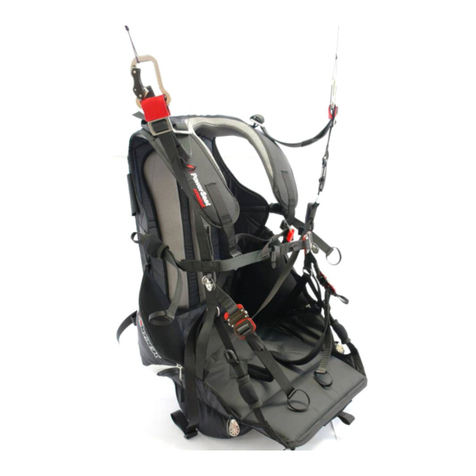
Dudek
Dudek PowerSeat comfort user manual
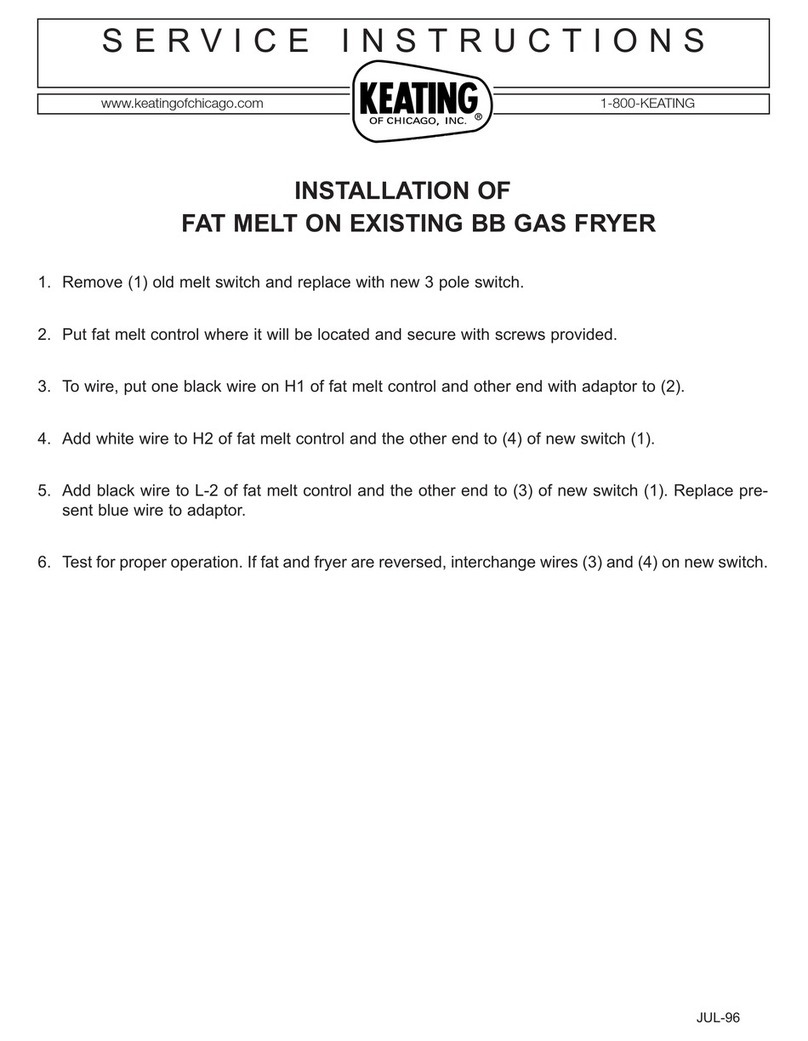
Keating Of Chicago
Keating Of Chicago Instant Recovery BB Gas Fryer Service instructions

Minebea Intec
Minebea Intec PR 6207 installation manual

Setra Systems
Setra Systems SRH operating instructions
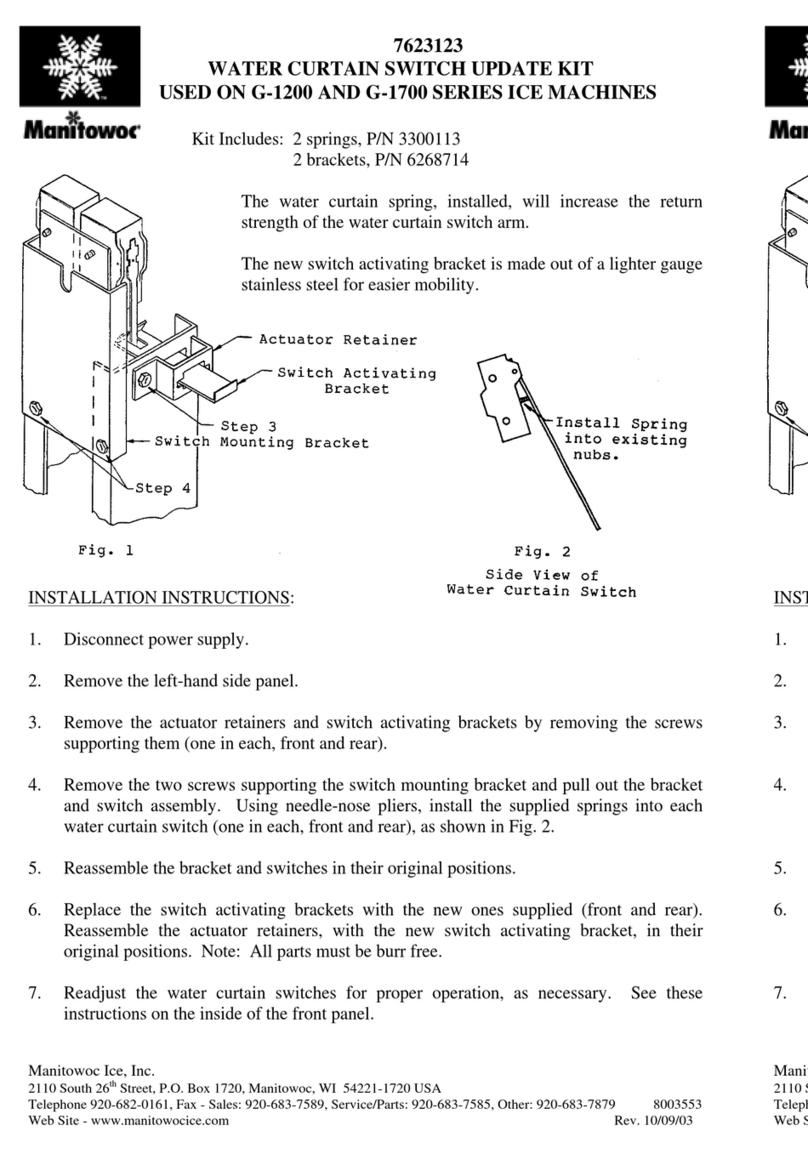
Manitowoc
Manitowoc 7623123 user manual
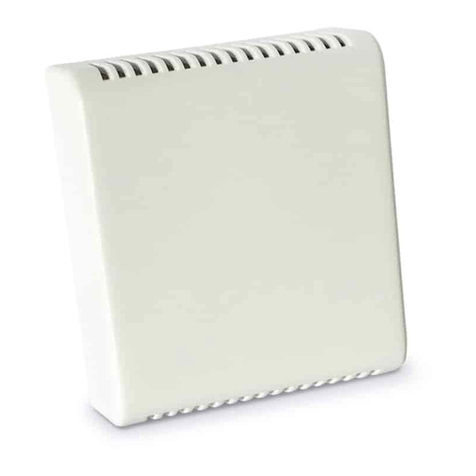
Titan
Titan TPZRCO2HT-Z3 manual
